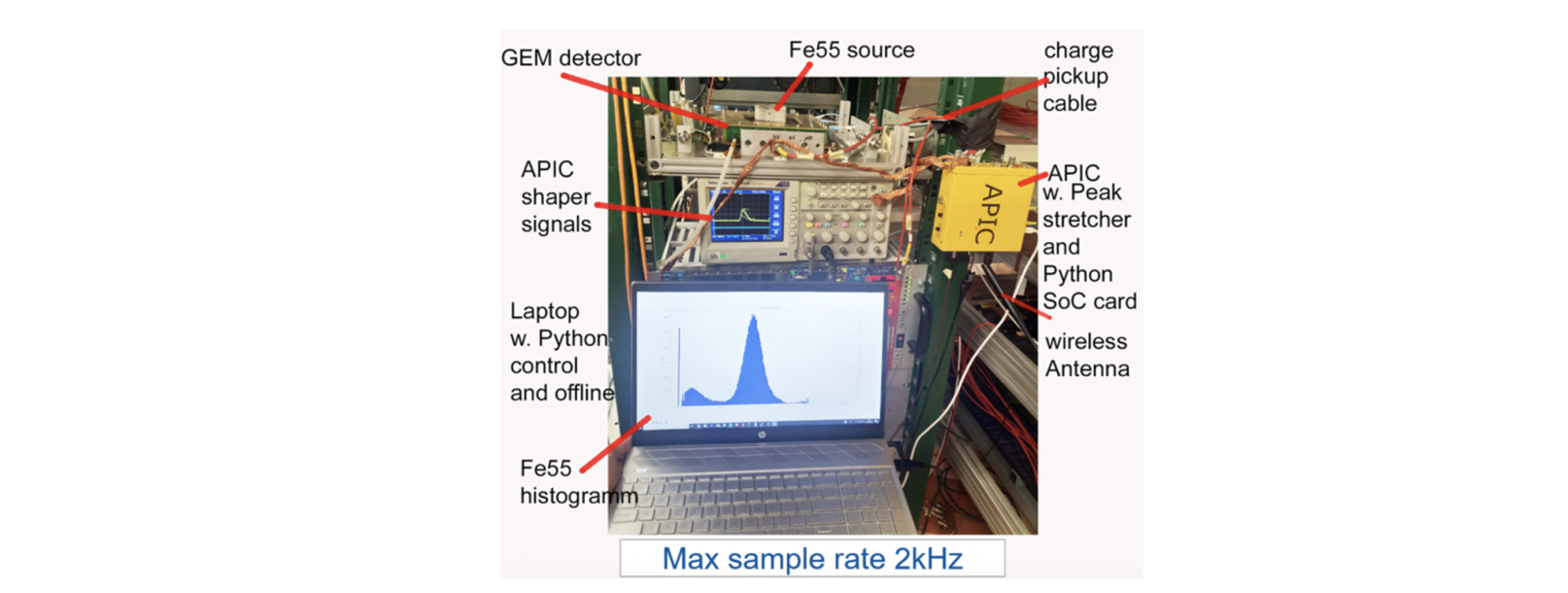MAPIC : Multichannel Analysis and wireless DAQ for the APIC
In the context of a summer student project, a multi-channel analyser (MCA) function was added to the existing APIC preamplifier-shaper-trigger box developed for the GDD lab (Fig. 1 left). For this purpose the fast, semi-gaussian shaper signals of the APIC get stretched by a custom peak-finder & stretcher card. At the output of the stretcher, the peak level of the 25 ns shaper signal is kept constant for up to 2 µs to get digitised by a 2 MSps ADC embedded in a MCU with a Micropython interpreter. The digitised peak data are transmitted wirelessly to a Laptop for online histogramming. A Tinker GUI was developed for controlling parameters such as gains, thresholds and signal polarity.

As proof of principle, a pin-diode was connected to the APIC pre-amplier input to record Bragg histograms of an 241Am alpha source as shown in the right plot in Figure 1, which agreed well with literature spectra. 55Fe energy spectra from a GEM detector were acquired at rates of up to 2 kHz with wireless data transmission. The ratio of main and escape peak positions closely matched the nominal value of 2:1.
HAL libraries were used to to interleave 3 ADCs and increase sampling rates to 7 MSps. The C code was optimised for DAQ rates targeting up to 100 kHz. The MAPIC project and associated software was archived at Github in order to be resumed in 2020 for full commissioning and production.

